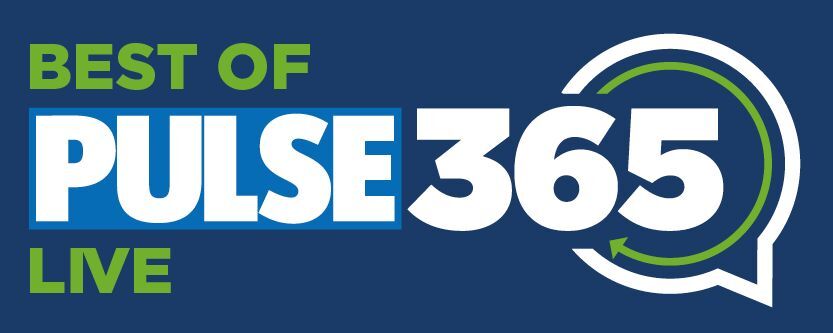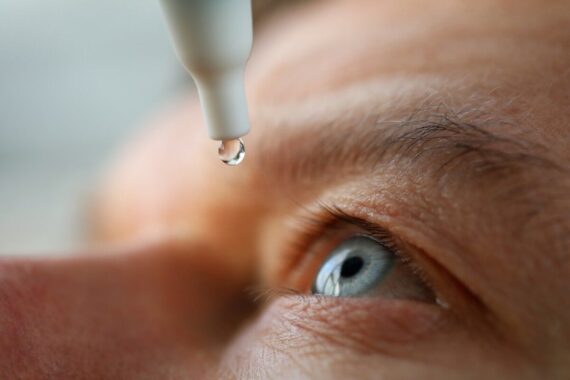Consultant rheumatologist Dr Elizabeth Price discussed the causes and management of dry eyes and mouth. This is the latest in our series highlighting the best of Pulse Live events

Dry eyes and mouth are common, affecting between 8 and 34% of the population. The symptoms become more common with age. In England there are more than 7 million prescriptions a year for artificial tears, at a cost to the NHS of over £27 million.
Causes of oral and ocular dryness include: ageing, post radiotherapy, hypothyroidism, poorly controlled diabetes, rheumatic diseases and drugs. Commonly implicated drugs include antidepressants, anti-histamines, anxiolytics, beta-blockers, Roaccutane and anti-tussives.
Dry eye presentation and effects
Patients with dry eyes rarely talk about dryness but are likely to complain of grittiness, tired eyes, loss of focus and blurred vision. An optician is best placed to test objectively for dryness. They will note reduction in the normal tear meniscus and reduced tear break up time (TBUT). However, dryness can also be measured in the clinic setting using Schirmer’s test strips.
Dry eye is usually a combination of aqueous and meibomian deficiency. In a normal tear film, the meibomian glands produce an oily layer which sits on top of the aqueous tears. This reduces tear evaporation and stabilises the tear film. If the meibomian secretions are deficient the tear film dissipates rapidly, exposing the cornea, disrupting focus and adding to ocular discomfort.
Dry mouth presentation and effects
The onset of oral dryness is usually insidious. Patients often adapt by drinking frequently and having water with meals to aid swallowing. There is significant salivary ‘reserve’ – a normal individual produces well over a litre of saliva a day, with flow naturally peaking in the early morning and lowest overnight. An individual can lose about 70% of salivary capacity before becoming aware of dryness.
Consequences of low salivary flow include accelerated dental caries, gum disease, oral thrush and angular cheilitis. Saliva performs many essential functions. It facilitates mastication and digestion of food, cleans debris off the teeth, neutralises the pH in the mouth to protect tooth enamel from damage and acts as an anti-bacterial/anti-fungal agent to inhibit growth of streptococcus mutans (which accelerates dental decay) and candida species.
Sjogren’s disease
One of the myriad causes of dryness, Sjogren’s is an auto-immune disease characterised by widespread dryness of eyes, moth, skin vagina and elsewhere, joint pain and fatigue. It generally affects women over 40 years of age and may present non-specifically. Positive ANA is seen in up to 85% of people with Sjogren’s disease and the specific anti-Ro antibody (which forms part of the Extractable Nuclear Antigen screen) in about 70%. A definitive diagnosis requires either the presence of the anti-Ro antibody or a minor salivary gland biopsy. A salivary gland ultrasound scan can be helpful. In Sjogren’s the normally uniform hyperechoic and homogenous salivary glands typically show focal or diffuse hypoechoic changes.
Management of dry eye
Whatever the cause of the dryness, management is generally similar. Think about conserving secretions, replacing secretions and stimulating secretions. Don’t forget to look for underlying conditions that make dryness worse, such as anxiety and hypothyroidism.
With ocular dryness, we need to treat all three layers – the corneal surface itself, the aqueous and meibomian layers. Advise the patient to avoid preservative-containing eye drops, which are often irritant and make the symptoms worse. They can flatten the corneal surface, reducing the surface area and reducing tear retention.
Wearing glasses can reduce tear evaporation by 30% and should be encouraged. Patients should be advised to avoid dry atmospheres and increase the humidity of their environment if possible. Ways of doing this include commercial humidifiers, saucers of waters placed on radiators, leafy green plants, avoiding air conditioning and turning down the central heating thermostat.
Hypromellose drops are usually insufficient for persistent dry eye. I would recommend using a sodium hyaluronate-containing drop as first line, starting with a low concentration of 0.1% and increasing if needed. Most patients can be managed on these four times daily.
If there are problems with tear retention – if the patient complains of drops rolling off the eye – consider using preservative-free carmellose which has better retention properties.
PVA drops are good for stabilising the tear film, and helpful in those with reduced TBUT. An eye ointment at night is longer-acting and helps prevent disturbed sleep. Some patients benefit from adding a liposomal eye spray to replicate the lipid layer or using a combination drop (for example Optive Plus) which aims to replace both the aqueous and oily secretions.
Advise the patient to use a heated eye compress (either microwaveable or USB driven) for 10 minutes daily. This stimulates meibomian gland production and can improve TBUT and ocular comfort.
Management of dry mouth
Start by advocating excellent dental hygiene. Patients should use a good quality fluoride toothpaste twice daily, limit sugar intake and avoid eating between meals. They should visit the dentist or hygienist every six months. Xylitol-containing products have the dual benefit of moisturising the mouth and inhibiting streptococcus mutans growth which accelerates dental decay. I usually recommend Xylimelts overnight and Peppersmith xylitol mints during the day.
Pilocarpine can be helpful in some patients. It is a muscarinic agonist that stimulates secretions in a non-specific way. It is effective in about 70% of patients with Sjogren’s but works regardless of the underlying cause of the dryness. It is normally well tolerated but it can cause sweating and flushing. I usually recommend that patients start with a low dose of 5mg once daily with food and escalate stepwise aiming for 5mg tds.
Self-management support
It is important that patient with dryness are encouraged to self-manage. The British Sjogren’s Syndrome Association (BSSA) www.bssa.uk.net has a helpful website and runs a free to access patient Helpline.
Dr Elizabeth Price is a consultant rheumatologist at Great Western Hospital in Swindon

Pulse 365 LIVE Events cover a broad array of topics pertinent to you, your patients, and your practice. You will gain free CPD and be able to take part in live Q&As. Specifically created for all practising, GMC-registered GPs and trainees, you will hear from experts across primary and secondary care, and network with like-minded GPs. Sign up for your nearest event today.

















